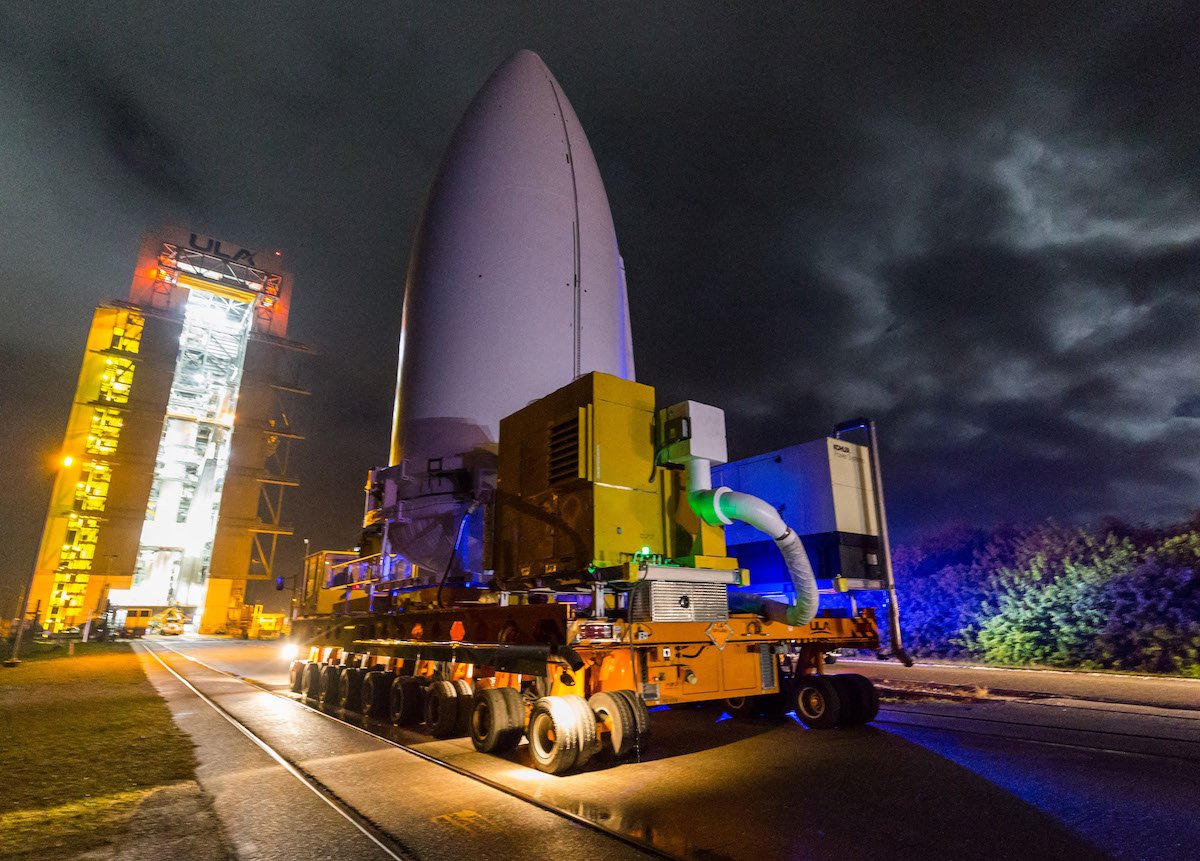The next United Launch Alliance (ULA) Atlas V rocket is loaded with NOAA’s Geostationary Operational Environmental Satellite (GOES)-T, a national weather observatory to improve the accuracy of life-saving forecasts in the Western U.S., Alaska, and Hawaii.
The spacecraft, encapsulated in the rocket’s 17.7-foot (5.4-meter) out-of-autoclave (OoA) payload fairing, arrived at ULA’s Vertical Integration Facility (VIF) this morning for hoisting aboard the Atlas V.
Technicians connected the payload and launch vehicle to begin combined operations leading to launch. Final testing and electrical checkouts will be performed before the 196-foot-tall (59.7 meters) rocket is transported to Space Launch Complex-41 for its countdown and liftoff.
Launch is scheduled for March 1 at 4:38 p.m. EST (2138 UTC) from Cape Canaveral, Fla. NASA's Launch Services Program (LSP) at Kennedy Space Center is managing the launch service. It will be ULA's 149th mission, our 38th for LSP and the 92nd launch of Atlas V.
GOES-T is the third in this current advanced series of GOES satellites. Forecasters liken the advancements as going from black and white TV to high-definition TV, providing much higher resolution imagery with improved timeliness of data as compared to previous generations of GOES satellites. The upgrades enable meteorologists to produce more accurate forecasts and precise warnings when extreme weather is approaching.
The Atlas V 541 rocket, fitted with four side-mounted solid rocket boosters, will deliver GOES-T into an optimized geosynchronous transfer orbit (GTO) three-and-a-half hours after liftoff.
Atlas V enhances the GOES-T satellite's trip to space by using all the rocket's performance to deliver the payload with a much higher perigee, or low point of the transfer orbit, and substantially reducing inclination relative to the equator in contrast to standard GTOs. Those actions by the launch vehicle benefit the satellite by getting GOES-T closer to its final geosynchronous orbit, thereby requiring fewer orbital maneuvers, and conserving its onboard fuel supply for a longer mission life.
The satellite will operate 22,236 miles (36,000 km) above Earth to cover the western half of the continental U.S., Alaska, Hawaii, Mexico, Central America and surrounding Pacific Ocean waters. It will replace GOES-17 (launched as GOES-S) as the GOES West observatory, working in tandem with GOES-16 (launched as GOES-R) in the GOES East location that covers the Eastern U.S., Caribbean and Atlantic.
Atlas and Delta rockets have launched all the GOES weather satellites to date; GOES-T will be the 19th launched since 1975.
Learn more about the Atlas V GOES-T launch

The GOES-T spacecraft arrives at the Vertical Integration Facility. Photo by United Launch Alliance

 Back To Blog List
Back To Blog List


